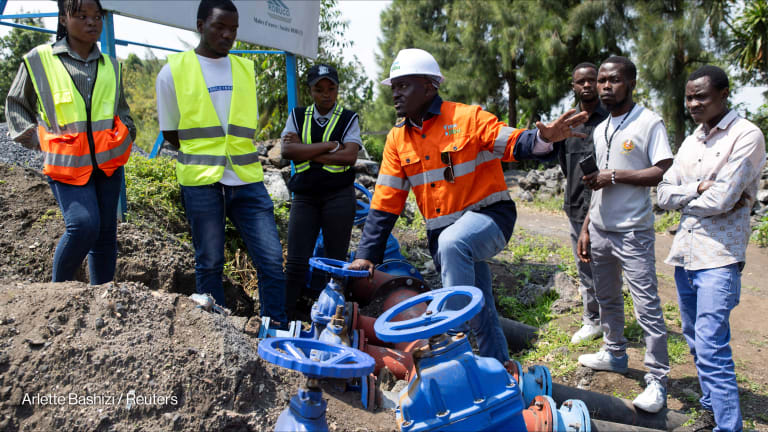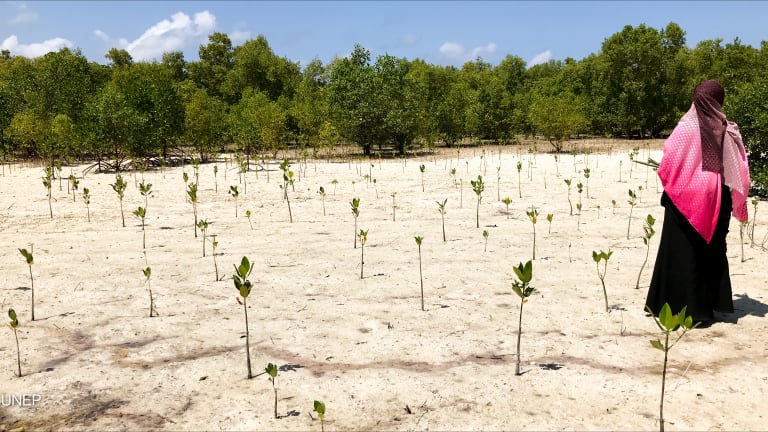
There is a dispute over what full transparency means and what it might be good for.
I am reading articles which warn that aid transparency might simply produce another “pile of data” nobody will read. Such piles are usually amassed if the main driving force to design datasets is a fear to “forget something” instead of a forward-looking vision of what could be done with them. The desire to fulfill calls for transparency and public accountability may aggravate such fears.
Only a widely accepted standard allows comparability between geographic regions, donors, sectors, et cetera of any criteria. The less complex this standard, the better our chances that the standard will be accepted by decision makers.
This is why I am in favor of limiting the standard to the bare essentials. Even these, properly chosen, allow a wide range of analysis and interpretation, likely including everything that has been voiced in this blog so far.
Access to field-related datasets
As essential I would define data that fulfill four key requirements:
1. Datasets with information required to characterize the basic workings of an intervention, i.e. what is done, for whom, and where? The OECD sector code would be used, among other items.
2. Information about disbursements by time unit (could be seen as a subset under item 1, but kept separate due the high degree of attention it usually gets).
3. Traceability of (1) and (2) to each individual intervention or project.
4. Full coverage of all interventions and projects.
This dataset should be provided by all large donors and include all projects financed by these fully or in part. It should be available in a timely manner (I think that annual or bi-annual publication would be enough) for all ongoing activities plus those which have ended during the period.
This dataset largely coincides with basic data highlighted by the International Aid Transparency Initiative (“identification and basic data”) plus some of the supplementary data. It would open up a wealth of analysis, such as: mapping aid by activity, size, sector; identifying patterns; estimating typical intervention costs; operational analysis; and relating these with geographic, demographic and further mappings existing from other sources.
The data would be invaluable to compare sectors, locate “darling” areas of project clusters and “orphan areas” without aid; see patterns such as preferred types of projects in specific areas, activities possibly competing, or others where synergies would be possible. The same data may be of direct use to project staff and planners, as they answer questions such as: Who works next to me, and, where is experience useful to my project?
This basic set should essentially contain, project by project: location, lead agency, objective, main activities, primary sector code (we consider that in many interventions, one single OECD-Development Cooperation Directorate CRS code does not allow to cover a sufficient range of activities to gain a basic understanding of what is going on), secondary sector code, start date, end date, total costs since start, total cost last period, donor contribution to total cost if available.
I agree with the IATI reasoning that the data and information must be given separately for each project. If this is not done, all other data cannot be traced to their origin.
Two main obstacles may be in the way here: First, the exact meaning of “project” would probably have to be made clear so as to not blur the picture by defining it too widely (e.g. subsume dozens of individual projects under a generalized “rural development” program umbrella). Second, we should get as close as we can to full geographic coding.
This latter requirement may well find opposition from many stakeholders, be it for political, security, or other reasons.
In-depth analysis
The basic dataset would become the gateway for structured in-depth analysis. I leave open who should get detailed access to these in-depth data, but I am mainly thinking of research entities. The second step would make full use of the potential of this dataset and enhance its merits in a way not possible until now. In this step, more or if possible all relevant project data should be made accessible by donors. Most important would be to provide detailed data on output, outcome, and impact.
The basic dataset described above allows to structure entire sectors, country programs, or any other groupings as defined by a given research question. This allows to analyze and compare huge numbers of projects with relatively modest effort by applying structured statistical analysis. Knowing their setting and features, the in-depth analysis of structured samples would be possible. Applying statistical representativity tools, this would open the way to characterize entire project groups and forecast features of interest, e.g. their success chances, failure risks, and even typical costs.
For instance, it would allow to include all rural water projects in an area, say, in the Sahel. There, intervention types could be related to geographical and cultural features, which would allow to quantify which type of project and setting occurs how often. From this, main groups and their size could be identified. Sample projects out of these groups could be drawn and analyzed in depth using all accessible material.
Properly done, significant qualifying statements on entire project groups could be made much like forecasts conducted in demoscopic and socio-economic analysis, while analyzing only a limited but representative number of sample projects.
We would come closer than ever to answer the old questions: How useful were earlier interventions. And: What type of interventions will be likely to succeed, and what will not.
What would you consider essential basic data that should be published in a meaningful way by all government donors? What about private-sector donors and foundations?
Read more of Full Disclosure: The aid transparency blog, written by aid workers for aid workers.








